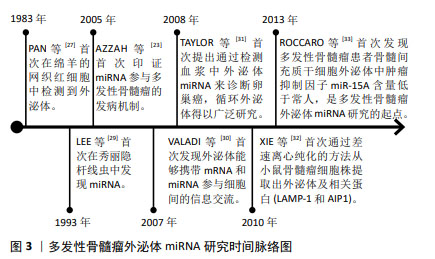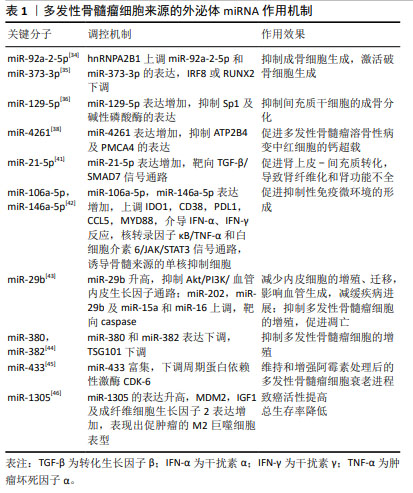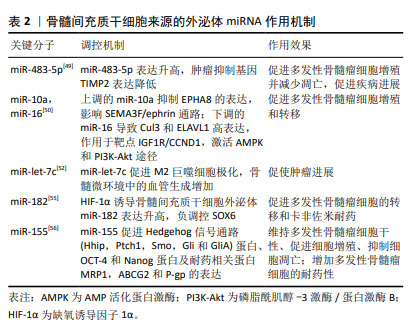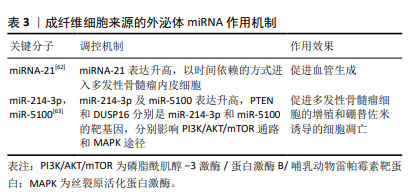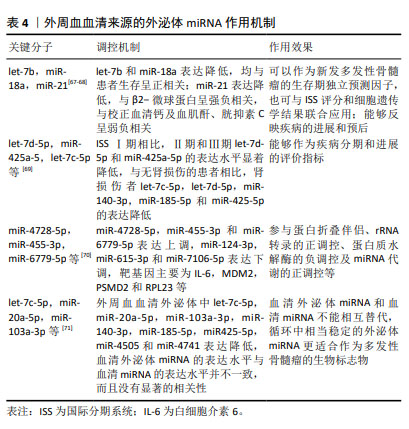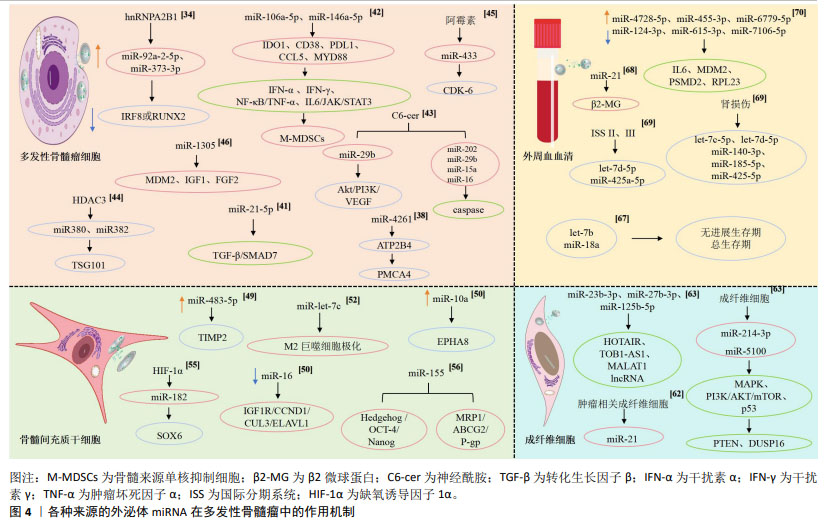[1] MALARD F, NERI P, BAHLIS N, et al. Multiple myeloma. Nat Rev Dis Primers. 2024;10(1):45.
[2] VAN DE DONK N, PAWLYN C, YONG KL. Multiple myeloma. Lancet. 2021;397(10272):410-427.
[3] ZHANG N, WU J, WANG Q, et al. Global burden of hematologic malignancies and evolution patterns over the past 30 years. Blood Cancer J. 2023;13(1):82.
[4] GENG J, ZHAO J, FAN R, et al. Global, regional, and national burden and quality of care of multiple myeloma, 1990-2019. J Glob Health. 2024;14:04033.
[5] SURVEILLANCE, EPIDEMIOLOGY, AND END RESULTS PROGRAM. Cancer stat facts: myeloma. national cancer institute (2024). https://seer.cancer.gov/statfacts/html/mulmy.html
[6] MINA R, MUSTO P, ROTA S, et al. Carfilzomib induction, consolidation, and maintenance with or without autologous stem-cell transplantation in patients with newly diagnosed multiple myeloma: pre-planned cytogenetic subgroup analysis of the randomised, phase 2 FORTE trial. Lancet Oncol. 2023;24(1):64-76.
[7] BIRD S, PAWLYN C. IMiD resistance in multiple myeloma: current understanding of the underpinning biology and clinical impact. Blood. 2023;142(2):131-140.
[8] ALIPOOR SD, CHANG H. Exosomal miRNAs in the tumor microenvironment of multiple myeloma. Cells. 2023;12(7):1030.
[9] CHEN M, XU R, ZHANG J, et al. Editorial: understanding the rna species in the extracellular vesicles of multiple myeloma. Front Oncol. 2022;12:946160.
[10] DOYLE LM, WANG MZ. Overview of extracellular vesicles, their origin, composition, purpose, and methods for exosome isolation and analysis. Cells. 2019;8(7):727.
[11] ALLEGRA A, DI G, TONACCI A, et al. Multiple myeloma cell-derived exosomes: implications on tumorigenesis, diagnosis, prognosis and therapeutic strategies. Cells. 2021;10(11):2865.
[12] WANG X, HE L, HUANG X, et al. Recent progress of exosomes in multiple myeloma: pathogenesis, diagnosis, prognosis and therapeutic strategies. Cancers (Basel). 2021;13(7):1635.
[13] KALLURI R, LEBLEU VS. The biology, function, and biomedical applications of exosomes. Science. 2020;367(6478):eaau6977.
[14] ARYA SB, COLLIE SP, PARENT CA. The ins-and-outs of exosome biogenesis, secretion, and internalization. Trends Cell Biol. 2024;34(2):90-108.
[15] HASHEMI M, ROSHANZAMIR SM, PASKEH MDA, et al. Non-coding RNAs and exosomal ncRNAs in multiple myeloma: an emphasis on molecular pathways. Eur J Pharmacol. 2023;941:175380.
[16] HAMILTON AJ, BAULCOMBE DC. A species of small antisense RNA in posttranscriptional gene silencing in plants. Science. 1999;286(5441): 950-952.
[17] KIM VN, NAM JW. Genomics of microRNA. Trends Genet. 2006;22: 165-173.
[18] MORI MA, LUDWIG RG, GARCIA-MARTIN R, et al. Extracellular miRNAs: from biomarkers to mediators of physiology and disease. Cell Metab. 2019;30(4):656-673.
[19] BEREZIKOV E, PLASTERK RH. Camels and zebrafish, viruses and cancer: a microRNA update. Hum Mol Genet. 2005;14(Suppl 2):R183-R190.
[20] MATTICK JS, MAKUNIN IV. Small regulatory RNAs in mammals. Hum Mol Genet. 2005;14(Suppl 1):R121-R132.
[21] ZHANG B, PAN X, COBB GP, et al. Micro RNAs as oncogenes and tumor suppressors. Dev Biol. 2007;302(1):1-12
[22] LIN H, XING Y, LEE P, et al. A microRNA component of the p53 tumor suppressor network. Nature. 2007;447:1130-1134.
[23] AZZAH A, TAMMY P, MARTA C, et al. MicroRNA expression analysis in multiple myeloma. Blood. 2005;106:1554.
[24] WANG Y, LI S, HU M, et al. Universal STING mimic boosts antitumour immunity via preferential activation of tumour control signalling pathways. Nat Nanotechnol. 2024;19(6):856-866.
[25] HE Z, ZHONG Y, REGMI P, et al. Exosomal long non-coding RNA TRPM2-AS promotes angiogenesis in gallbladder cancer through interacting with PABPC1 to activate NOTCH1 signaling pathway. Mol Cancer. 2024;23(1):65.
[26] WANG L, SHEN K, GAO Z, et al. Melanoma derived exosomes amplify radiotherapy induced abscopal effect via IRF7/I-IFN axis in macrophages. Adv Sci (Weinh). 2024;11(13):e2304991.
[27] PAN B, JOHNSTONE R . Fate of the transferrin receptor during maturation of sheep reticulocytes in vitro: selective externalization of the receptor. Cell. 1983;33(3):967-978.
[28] JOHNSTONE R, ADAM M, HAMMOND J, et al.Vesicle formation during reticulocyte maturation.Association of plasma membrane activities with released vesicles (exosomes). J Biol Chem, 1987;262(19):9412-9420.
[29] LEE RC, FEINBAUM R, AMBROS V.The C. elegans heterochronic gene lin-4 encodes small RNAs with antisense complementarity to lin-14. Cell. 1993;75(5):843-854.
[30] VALADI H, EKSTRÖM K, BOSSIOS A, et al. Exosome-mediated transfer of mRNAs and microRNAs is a novel mechanism of genetic exchange between cells. Nature Cell Biology. 2007;9(6):654-659.
[31] TAYLOR D, GERCEL-TAYLOR C. MicroRNA signatures of tumor-derived exosomes as diagnostic biomarkers of ovarian cancer. Gynecol Oncol. 2008;110(1):13-21.
[32] XIE Y, BAI O, ZHANG H, et al. Tumor necrosis factor gene-engineered J558 tumor cell-released exosomes stimulate tumor antigen P1A-specific CD8+ CTL responses and antitumor immunity. Cancer Biother Radiopharm. 2010;25(1):21-28.
[33] ROCCARO AM, SACCO A, MAISO P, et al. BM mesenchymal stromal cell-derived exosomes facilitate multiple myeloma progression. J Clin Invest. 2013;123(4):1542-1555.
[34] LIU R, ZHONG Y, CHEN R, et al. m(6)A reader hnRNPA2B1 drives multiple myeloma osteolytic bone disease. Theranostics. 2022;12(18): 7760-7774.
[35] RAIMONDO S, SAIEVA L, VICARIO E, et al. Multiple myeloma-derived exosomes are enriched of amphiregulin (AREG) and activate the epidermal growth factor pathway in the bone microenvironment leading to osteoclastogenesis. J Hematol Oncol. 2019;12(1):2.
[36] AIMONDO S, URZÌ O, CONIGLIARO A, et al. Extracellular vesicle microRNAs contribute to the osteogenic inhibition of mesenchymal stem cells in multiple myeloma. Cancers (Basel). 2020;12(2):449.
[37] GHUMMAN GM, HAIDER M, RAFFAY EA, et al. Hypercalcemia-induced hypokalemic metabolic alkalosis with hypophosphatemia in a multiple myeloma patient: lessons for the clinical nephrologist. J Nephrol. 2023;36(2):315-317.
[38] BIAN S, ZHANG X, LIN L, et al. Exosomal MiR-4261 mediates calcium overload in RBCs by downregulating the expression of ATP2B4 in multiple myeloma. Front Oncol. 2022;12:978755.
[39] DIMOPOULOS MA, MERLINI G, BRIDOUX F, et al. Management of multiple myeloma-related renal impairment: recommendations from the International Myeloma Working Group. Lancet Oncol. 2023; 24(7):e293-e311.
[40] SALAHUDDIN AZ, ALAM MR, HOSSAIN RM, et al. Renal involvement as a presenting feature of multiple myeloma. Mymensingh Med J. 2019;28(3):527-535.
[41] LIU L, LIU L, LIU R, et al. Exosomal miR-21-5p derived from multiple myeloma cells promote renal epithelial-mesenchymal transition through targeting TGF-β/SMAD7 signalling pathway. Clin Exp Pharmacol Physiol. 2023;50(9):711-718.
[42] MIZUHARA K, SHIMURA Y, TSUKAMOTO T, et al. Tumour-derived exosomes promote the induction of monocytic myeloid-derived suppressor cells from peripheral blood mononuclear cells by delivering miR-106a-5p and miR-146a-5p in multiple myeloma. Br J Haematol. 2023;203(3):426-438.
[43] LIU L, YE Q, LIU L, et al. C6-ceramide treatment inhibits the proangiogenic activity of multiple myeloma exosomes via the miR-29b/Akt pathway. J Transl Med. 2020;18(1):298.
[44] HO M, CHEN T, LIU J, et al. Targeting histone deacetylase 3 (HDAC3) in the bone marrow microenvironment inhibits multiple myeloma proliferation by modulating exosomes and IL-6 trans-signaling. Leukemia. 2020;34(1):196-209.
[45] VULPIS E, CUOLLO L, BORRELLI C, et al. Doxorubicin-mediated miR-433 expression on exosomes promotes bystander senescence in multiple myeloma cells in a ddr-independent manner. Int J Mol Sci. 2023;24(7):6862.
[46] LEE JY, RYU D, LIM SW, et al. Exosomal miR-1305 in the oncogenic activity of hypoxic multiple myeloma cells: a biomarker for predicting prognosis. J Cancer. 2021;12(10):2825-2834.
[47] DENIZ IA, KARBANOVá J, WOBUS M, et al. Mesenchymal stromal cell-associated migrasomes: a new source of chemoattractant for cells of hematopoietic origin. Cell Commun Signal. 2023;21(1):36.
[48] GARCíA O, RODRíGUEZ G, ENCINAS J, et al. The role of tumor microenvironment in multiple myeloma development and progression. Cancers (Basel). 2021;13(2):217.
[49] GU J, WANG M, WANG X, et al. Exosomal miR-483-5p in bone marrow mesenchymal stem cells promotes malignant progression of multiple myeloma by targeting TIMP2. Front Cell Dev Biol. 2022;10:862524.
[50] PENG Y, SONG X, LAN J, et al. Bone marrow stromal cells derived exosomal miR-10a and miR-16 may be involved in progression of patients with multiple myeloma by regulating EPHA8 or IGF1R/CCND1. Medicine (Baltimore). 2021;100(4):e23447.
[51] RAMEZANI A, TAFAZOLI A, SALIMI F, et al. Current knowledge on therapeutic, diagnostic, and prognostics applications of exosomes in multiple myeloma: opportunities and challenges. Arch Biochem Biophys. 2024;756:109994.
[52] TIAN X, SUN M, WU H, et al. Exosome-derived miR-let-7c promotes angiogenesis in multiple myeloma by polarizing M2 macrophages in the bone marrow microenvironment. Leuk Res. 2021;105:106566.
[53] SUN C, LI W, LI Y, et al. MiR-182-5p mediated by exosomes derived from bone marrow mesenchymal stem cell attenuates inflammatory responses by targeting TLR4 in a mouse model of myocardial infraction. Immune Netw. 2022;22(6):e49.
[54] ZHAO J, LI X, HU J, et al. Mesenchymal stromal cell-derived exosomes attenuate myocardial ischaemia-reperfusion injury through miR-182-regulated macrophage polarization. Cardiovasc Res. 2019;115(7): 1205-1216.
[55] LONG S, LONG S, HE H, et al. Exosomal miR-182 derived from bone marrow mesenchymal stem cells drives carfilzomib resistance of multiple myeloma cells by targeting SOX6. J Orthop Surg Res. 2023; 18(1):937.
[56] GAO X, ZHOU J, WANG J, et al. Mechanism of exosomal miR-155 derived from bone marrow mesenchymal stem cells on stemness maintenance and drug resistance in myeloma cells. J Orthop Surg Res. 2021;16(1):637.
[57] KRISHNAN SR, BEBAWY M. Circulating biosignatures in multiple myeloma and their role in multidrug resistance. Mol Cancer. 2023; 22(1):79.
[58] KOCHETKOVA M, SAMUEL MS. Differentiation of the tumor microenvironment: are CAFs the Organizer? Trends Cell Biol. 2022; 32(4):285-294.
[59] NIU N, SHEN X, WANG Z, et al. Tumor cell-intrinsic epigenetic dysregulation shapes cancer-associated fibroblasts heterogeneity to metabolically support pancreatic cancer. Cancer Cell. 2024;42(5): 869-884.e9.
[60] LI Q, YUAN H, ZHAO G, et al. ZNF32 prevents the activation of cancer-associated fibroblasts through negative regulation of TGFB1 transcription in breast cancer. FASEB J. 2023;37(4):e22837.
[61] DING Z, SHI R, HU W, et al. Cancer-associated fibroblasts in hematologic malignancies: elucidating roles and spotlighting therapeutic targets. Front Oncol. 2023;13:1193978.
[62] SUN M, WANG X, SHOU Y, et al. Cancer-associated fibroblast-derived exosome microRNA-21 promotes angiogenesis in multiple myeloma. Sci Rep. 2023;13(1):9671.
[63] SALTARELLA I, LAMANUZZI A, DESANTIS V, et al. Myeloma cells regulate miRNA transfer from fibroblast-derived exosomes by expression of lncRNAs. J Pathol. 2022;256(4):402-413.
[64] ZHANG L, PAN L, XIANG B, et al. Potential role of exosome-associated microRNA panels and in vivo environment to predict drug resistance for patients with multiple myeloma. Oncotarget. 2016;7(21):30876-30891.
[65] POURHANIFEH M, MAHJOUBIN T, SHAFIEE A, et al. MicroRNAs and exosomes: Small molecules with big actions in multiple myeloma pathogenesis. IUBMB Life. 2020;72(3):314-333.
[66] CARIELLO M, SQUILLA A, PIACENTE M, et al. Drug Resistance: the role of exosomal mirna in the microenvironment of hematopoietic tumors. Molecules. 2022;28(1):116.
[67] MANIER S, LIU CJ, AVET-LOISEAU H, et al. Prognostic role of circulating exosomal miRNAs in multiple myeloma. Blood. 2017;129(17): 2429-2436.
[68] ZHOU L, LIU XL, LI YW, et al. Clinical study of miRNAs derived from serum exosomes in multiple myeloma. Zhongguo Shi Yan Xue Ye Xue Za Zhi. 2022;30(5):1490-1495.
[69] ZHANG ZY, LI YC, GENG CY, et al. Potential relationship between clinical significance and serum exosomal miRNAs in patients with multiple myeloma. Biomed Res Int. 2019;2019:1575468.
[70] FANG T, SUN H, SUN X, et al. Exosome miRNAs profiling in serum and prognostic evaluation in patients with multiple myeloma. Blood Sci. 2023;5(3):196-208.
[71] ZHANG ZY, LI YC, GENG CY, et al. Serum exosomal microRNAs as novel biomarkers for multiple myeloma. Hematol Oncol. 2019;37(4): 409-417.
[72] EL-CHEIKH J, MOUKALLED N, MALARD F, et al. Cardiac toxicities in multiple myeloma: an updated and a deeper look into the effect of different medications and novel therapies. Blood Cancer J. 2023; 13(1):83.
[73] YU M, JI L, LI S, et al. Exosomal circ-CACNG2 promotes cardiomyocyte apoptosis in multiple myeloma via modulating miR-197-3p/caspase3 axis. Exp Cell Res. 2022;417(2):113229.
[74] SUN R, LIU W, ZHAO Y, et al. Exosomal circRNA as a novel potential therapeutic target for multiple myeloma-related myocardial damage. Cancer Cell Int. 2021;21(1):311.
[75] YU M, YU J, ZHANG Y, et al. A novel circRNA-miRNA-mRNA network revealed exosomal circ-ATP10A as a biomarker for multiple myeloma angiogenesis. Bioengineered. 2022;13(1):667-683.
[76] WU Y, ZHANG Z, WU J, et al. The exosomes containing LINC00461 originated from multiple myeloma inhibit the osteoblast differentiation of bone mesenchymal stem cells via sponging miR-324-3p. J Healthc Eng. 2022;2022:3282860.
[77] TANG JX, CHEN Q, LI Q, et al. Exosomal mRNAs and lncRNAs involved in multiple myeloma resistance to bortezomib. Cell Biol Int. 2021;45(5):965-975.
[78] DENG M, YUAN H, LIU S, et al. Exosome-transmitted LINC00461 promotes multiple myeloma cell proliferation and suppresses apoptosis by modulating microRNA/BCL-2 expression. Cytotherapy. 2019;21(1):96-106.
[79] YUAN S, LI Q, HE C, et al. Anti-BCMA-engineered exosomes for bortezomib targeted delivery in multiple myeloma. Blood Adv. 2024. doi:10.1182/bloodadvances.2023012464.
[80] RUSSO M, TIRINATO L, SCIONTI F, et al. Raman spectroscopic stratification of multiple myeloma patients based on exosome profiling. ACS Omega. 2020;5(47):30436-30443.
[81] DI NOTO G, BUGATTI A, ZENDRINI A, et al. Merging colloidal nanoplasmonics and surface plasmon resonance spectroscopy for enhanced profiling of multiple myeloma-derived exosomes. Biosens Bioelectron. 2016;77:518-524.
|
